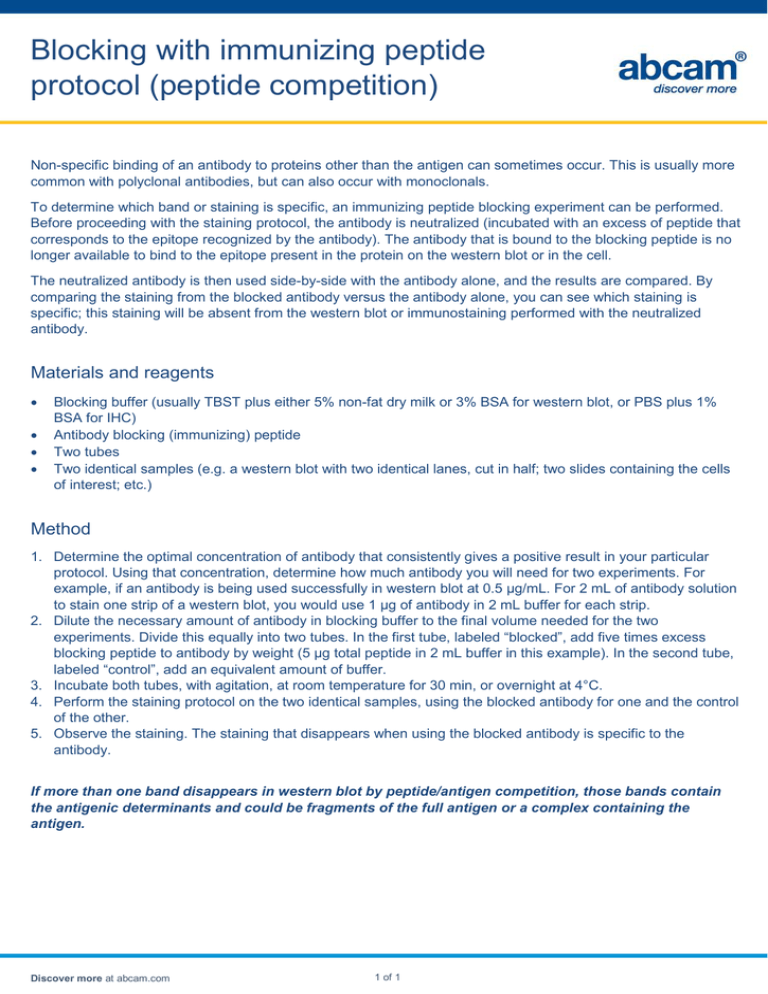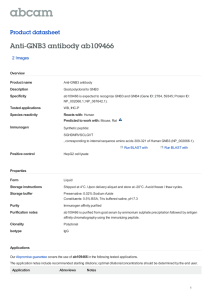Blocking with immunizing peptide protocol (peptide competition)
advertisement

Blocking with immunizing peptide protocol (peptide competition) Non-specific binding of an antibody to proteins other than the antigen can sometimes occur. This is usually more common with polyclonal antibodies, but can also occur with monoclonals. To determine which band or staining is specific, an immunizing peptide blocking experiment can be performed. Before proceeding with the staining protocol, the antibody is neutralized (incubated with an excess of peptide that corresponds to the epitope recognized by the antibody). The antibody that is bound to the blocking peptide is no longer available to bind to the epitope present in the protein on the western blot or in the cell. The neutralized antibody is then used side-by-side with the antibody alone, and the results are compared. By comparing the staining from the blocked antibody versus the antibody alone, you can see which staining is specific; this staining will be absent from the western blot or immunostaining performed with the neutralized antibody. Materials and reagents • • • • Blocking buffer (usually TBST plus either 5% non-fat dry milk or 3% BSA for western blot, or PBS plus 1% BSA for IHC) Antibody blocking (immunizing) peptide Two tubes Two identical samples (e.g. a western blot with two identical lanes, cut in half; two slides containing the cells of interest; etc.) Method 1. Determine the optimal concentration of antibody that consistently gives a positive result in your particular protocol. Using that concentration, determine how much antibody you will need for two experiments. For example, if an antibody is being used successfully in western blot at 0.5 µg/mL. For 2 mL of antibody solution to stain one strip of a western blot, you would use 1 µg of antibody in 2 mL buffer for each strip. 2. Dilute the necessary amount of antibody in blocking buffer to the final volume needed for the two experiments. Divide this equally into two tubes. In the first tube, labeled “blocked”, add five times excess blocking peptide to antibody by weight (5 µg total peptide in 2 mL buffer in this example). In the second tube, labeled “control”, add an equivalent amount of buffer. 3. Incubate both tubes, with agitation, at room temperature for 30 min, or overnight at 4°C. 4. Perform the staining protocol on the two identical samples, using the blocked antibody for one and the control of the other. 5. Observe the staining. The staining that disappears when using the blocked antibody is specific to the antibody. If more than one band disappears in western blot by peptide/antigen competition, those bands contain the antigenic determinants and could be fragments of the full antigen or a complex containing the antigen. Discover more at abcam.com 1 of 1






